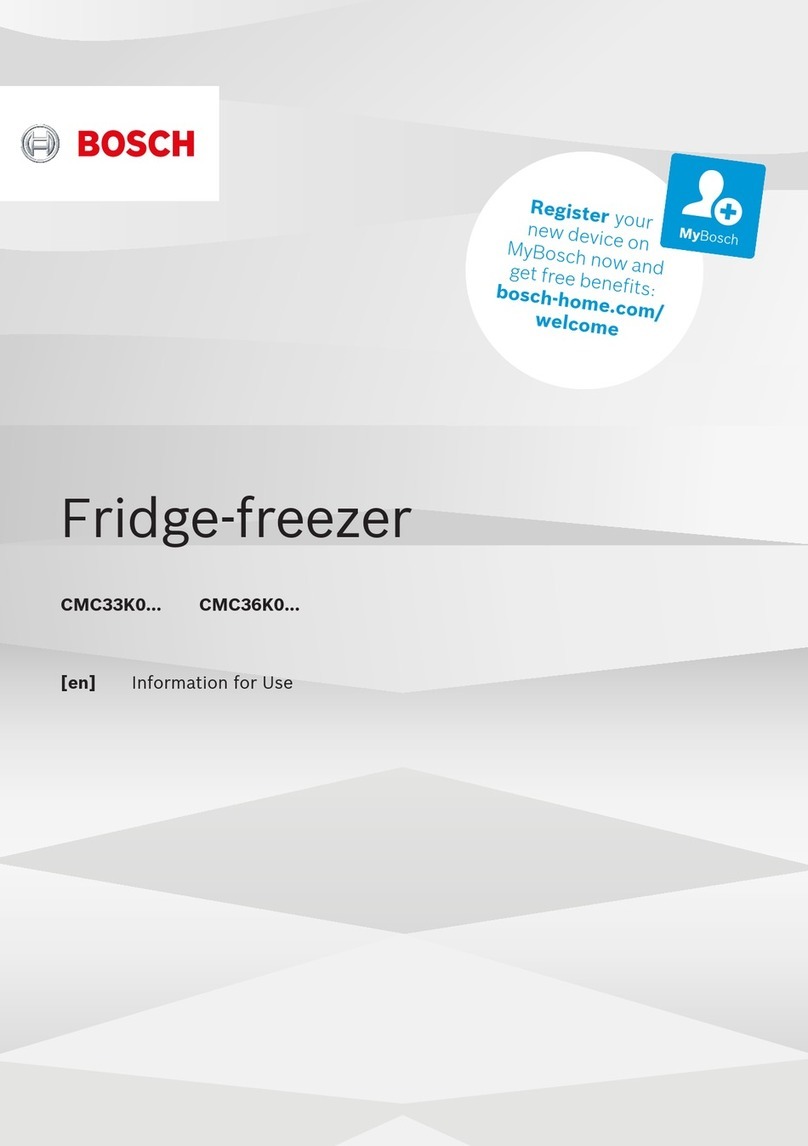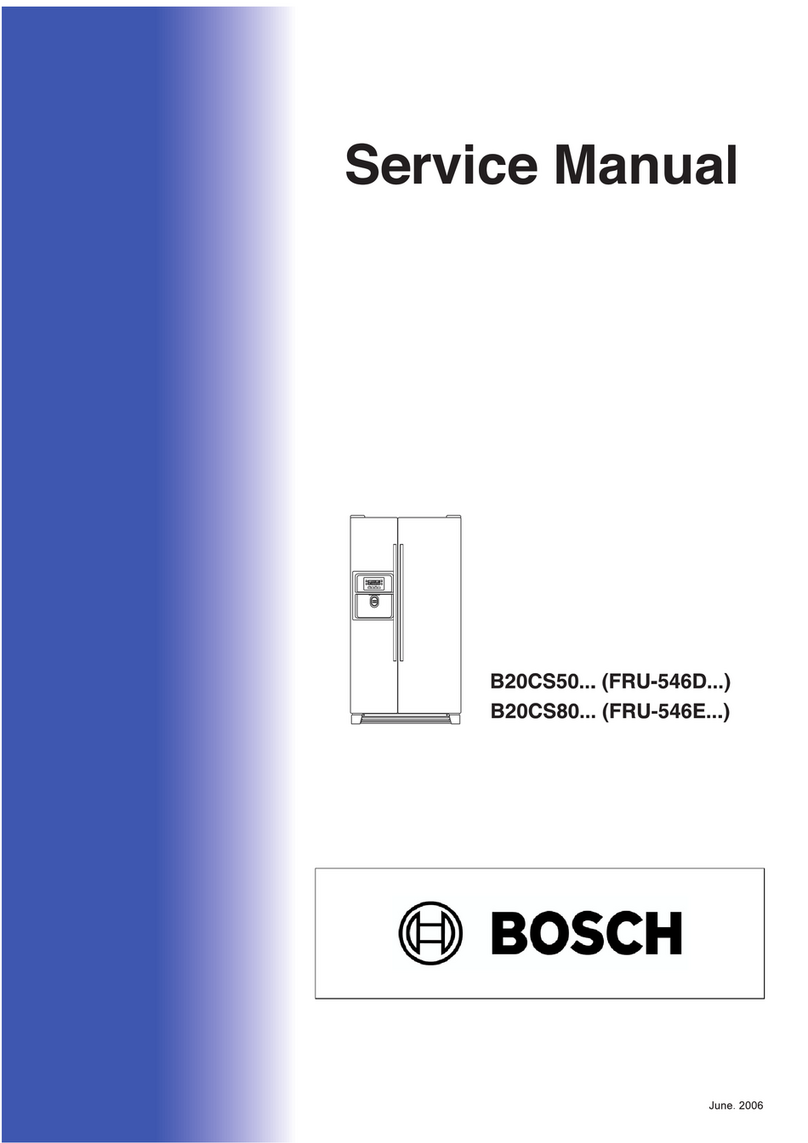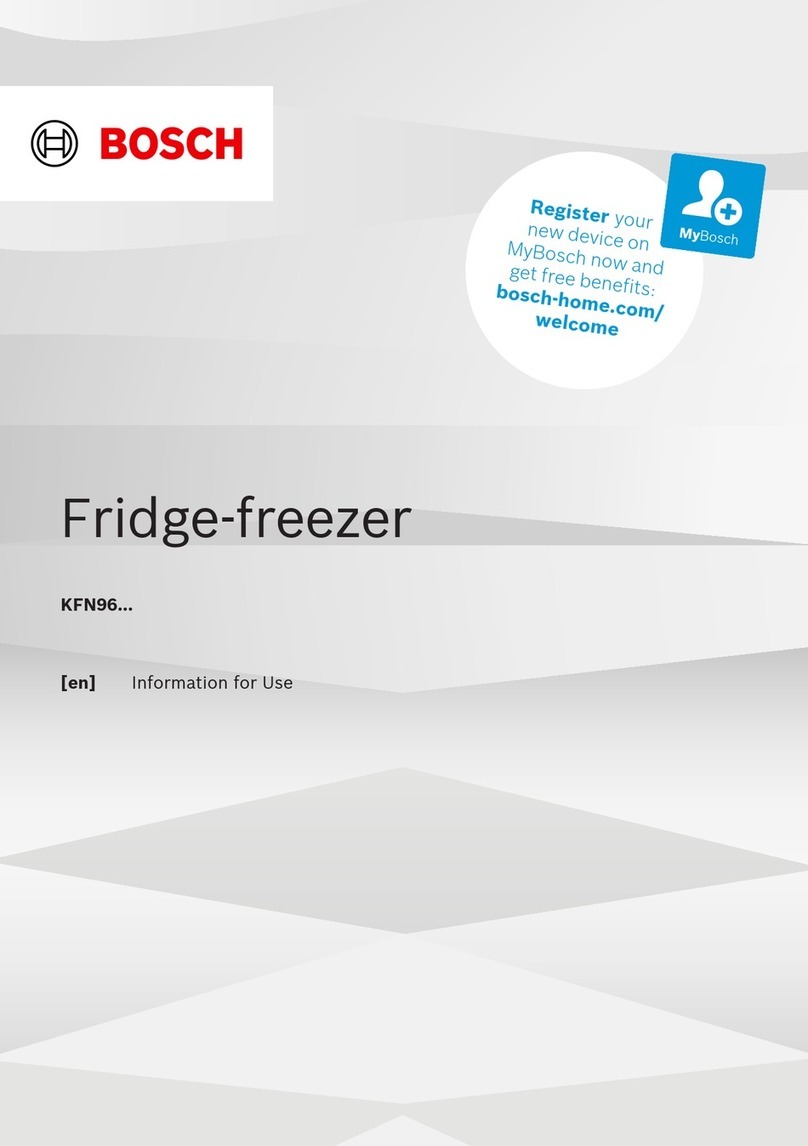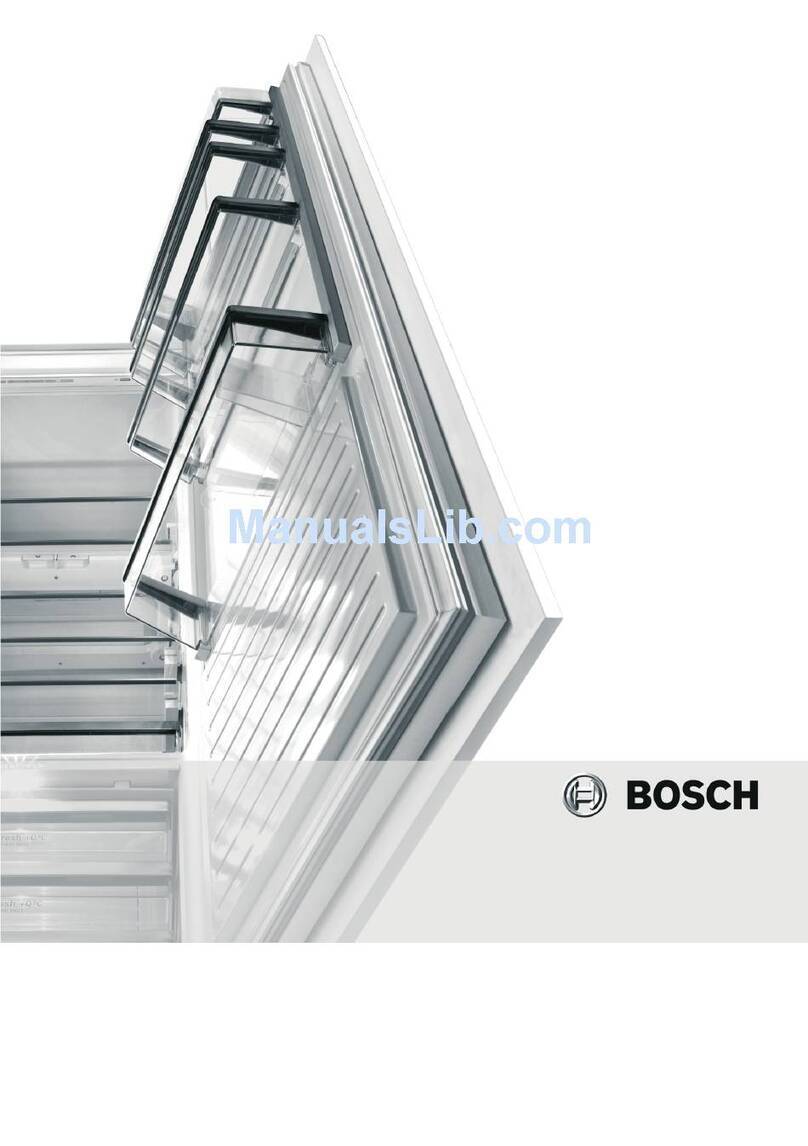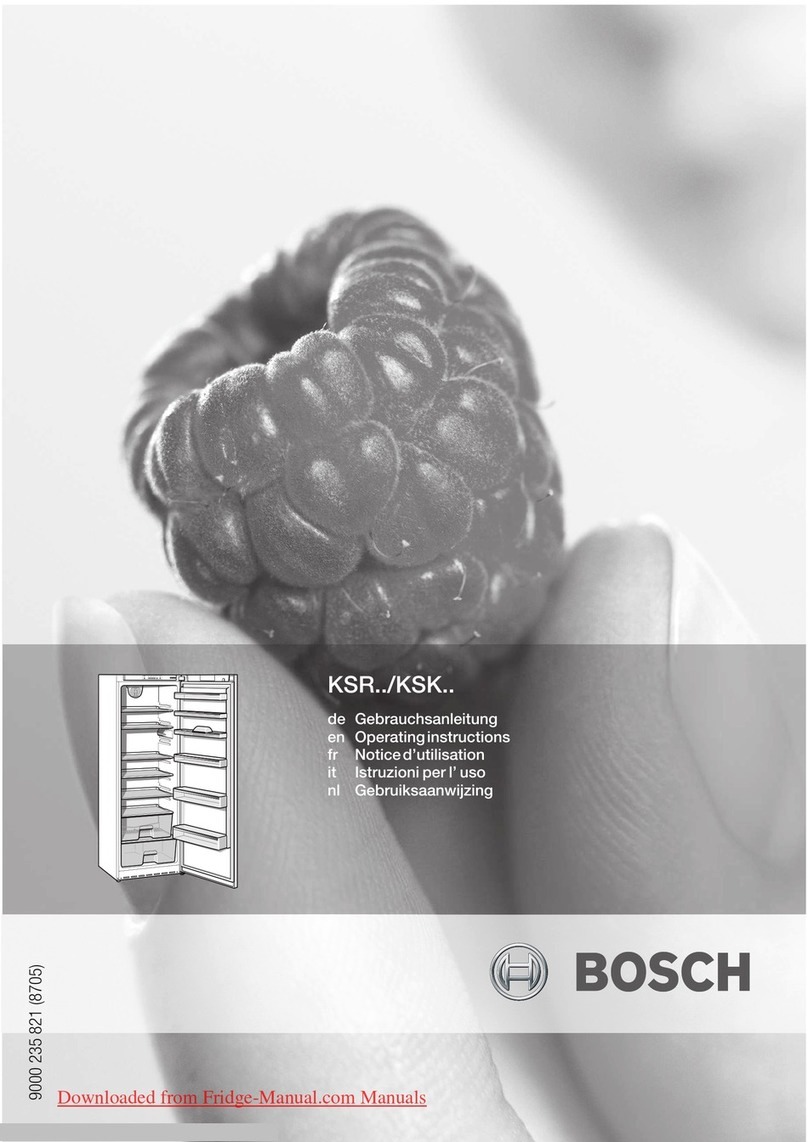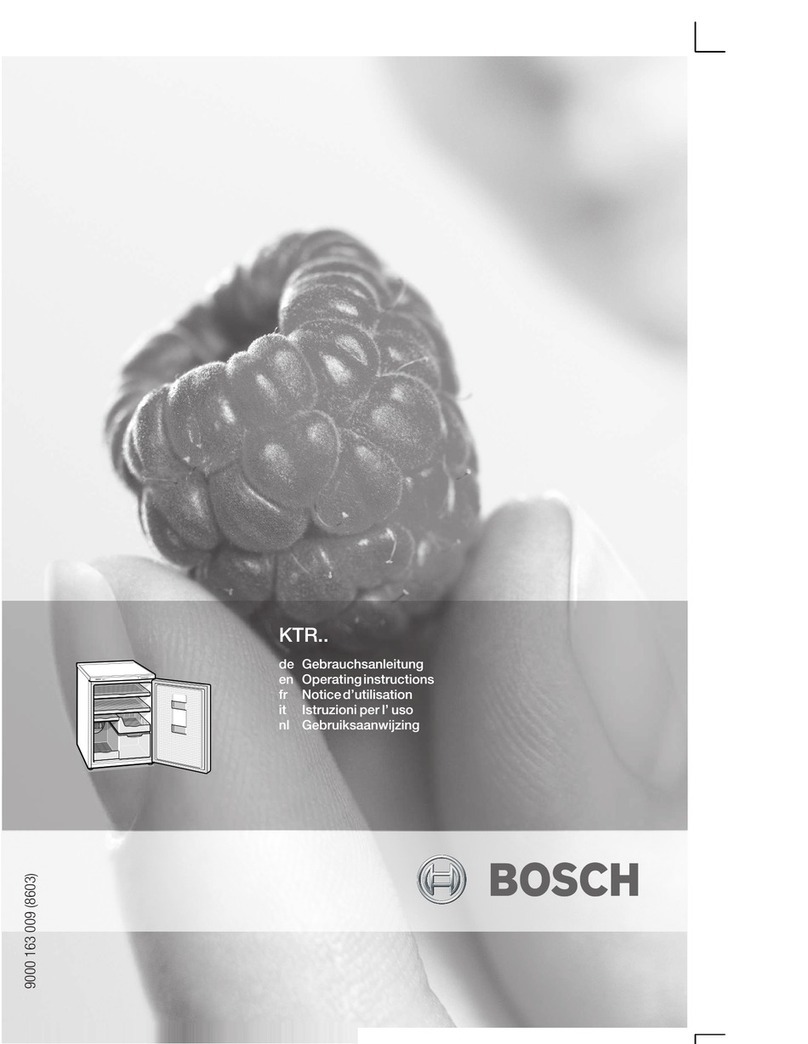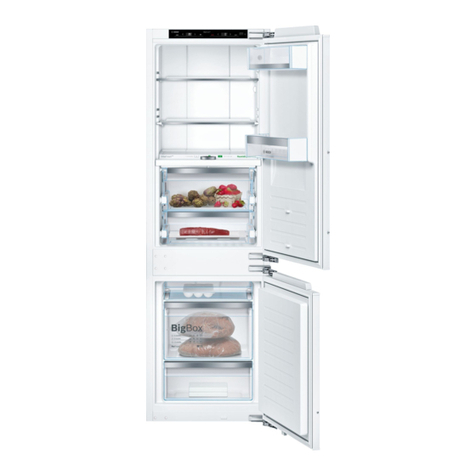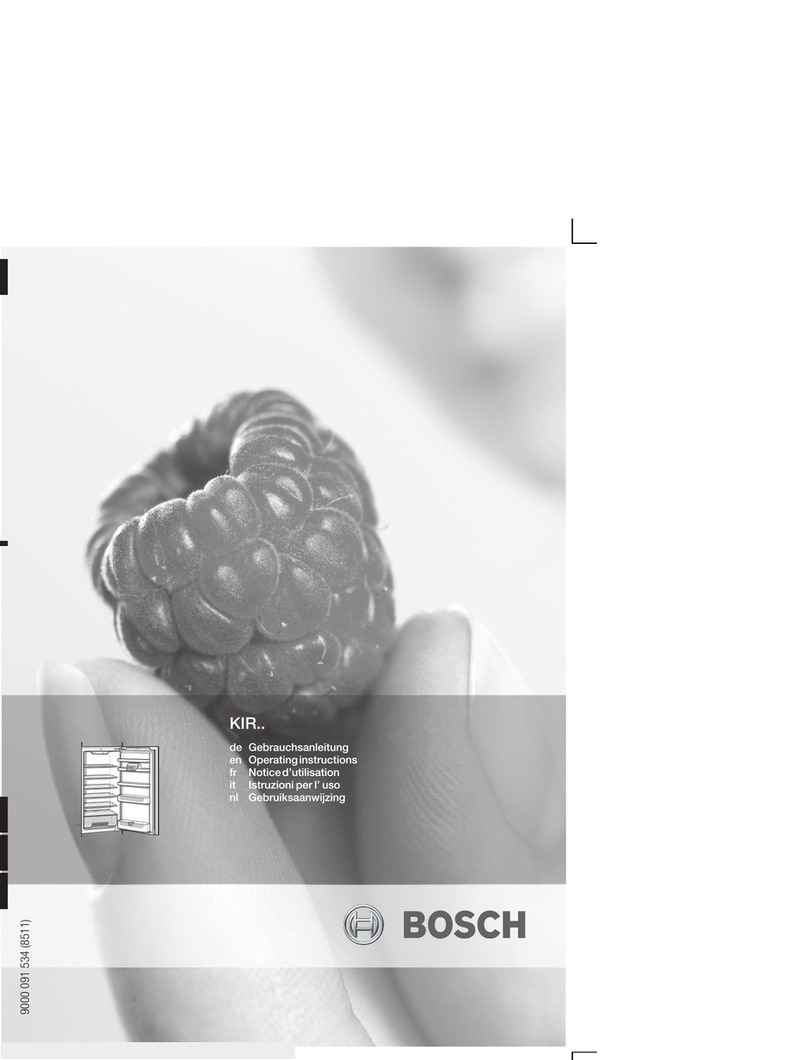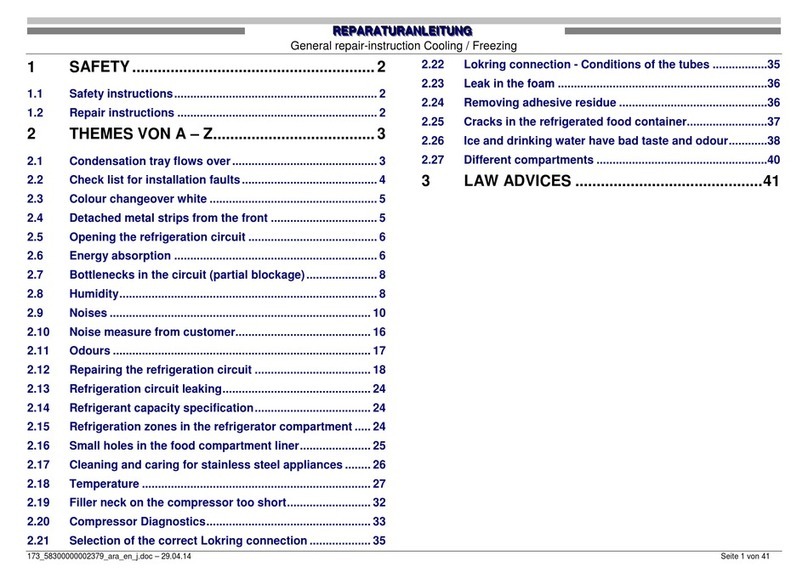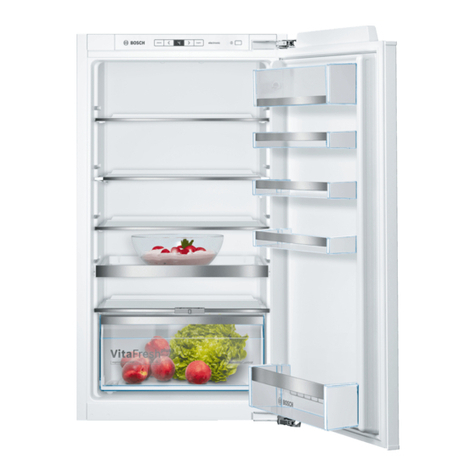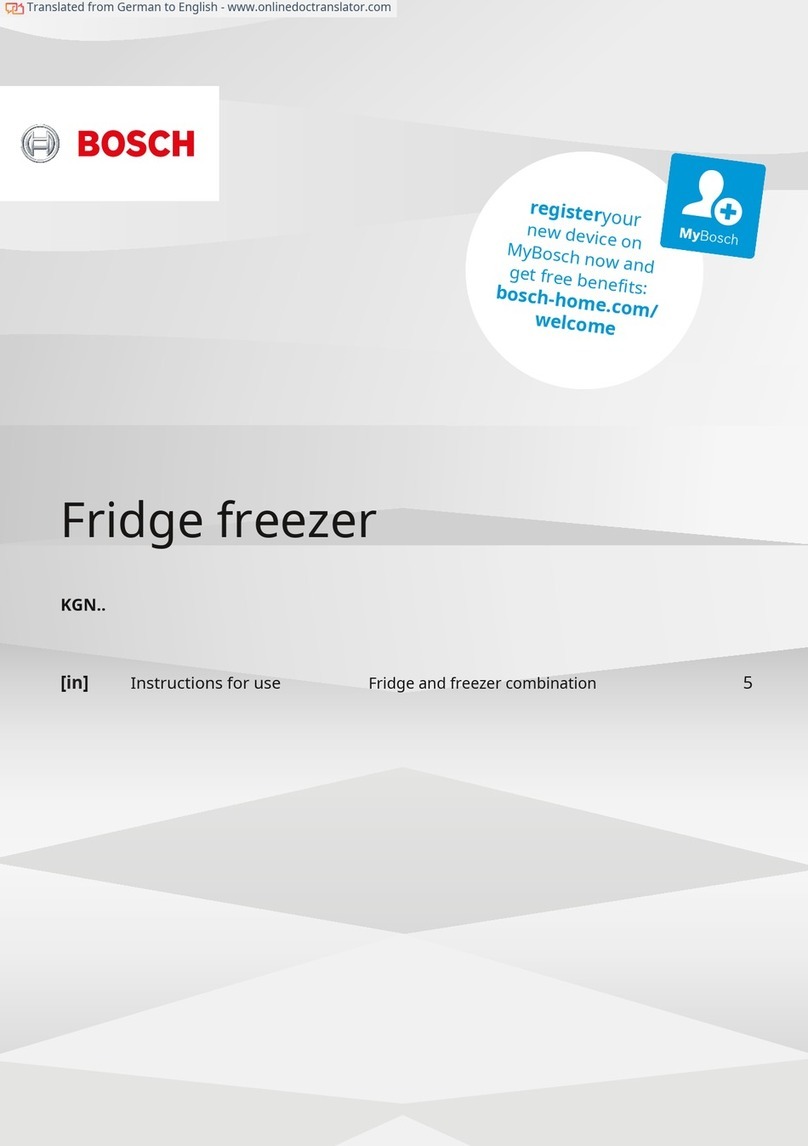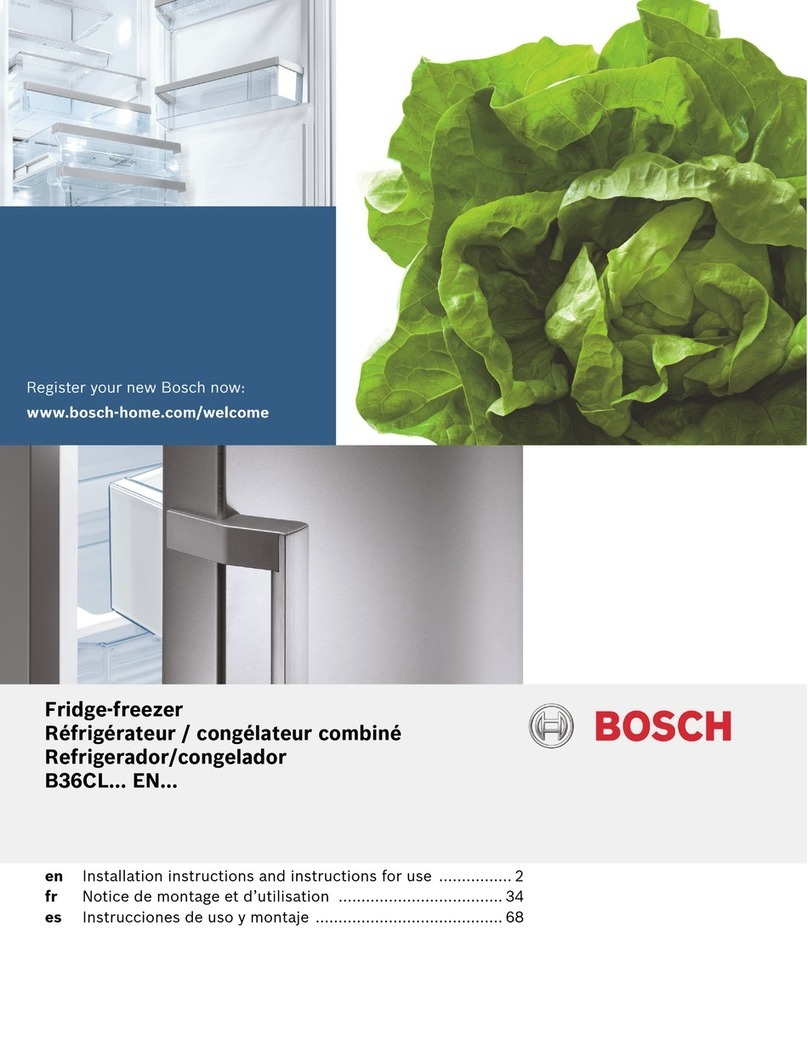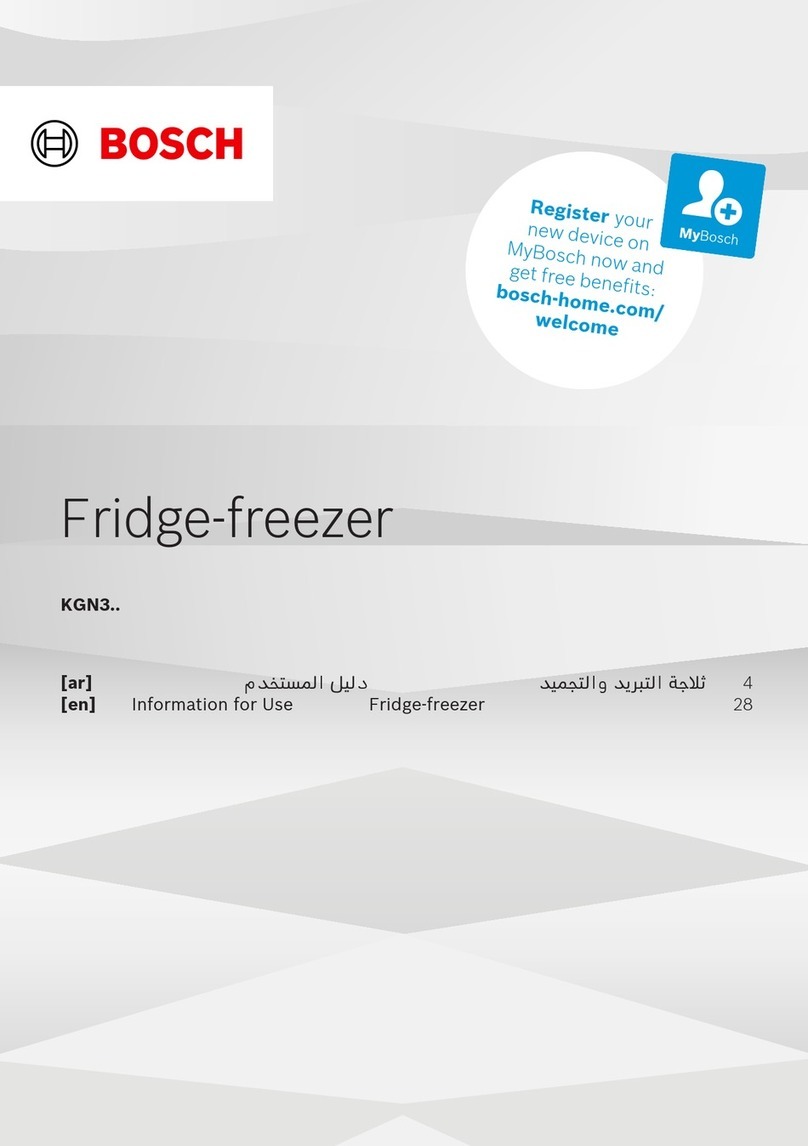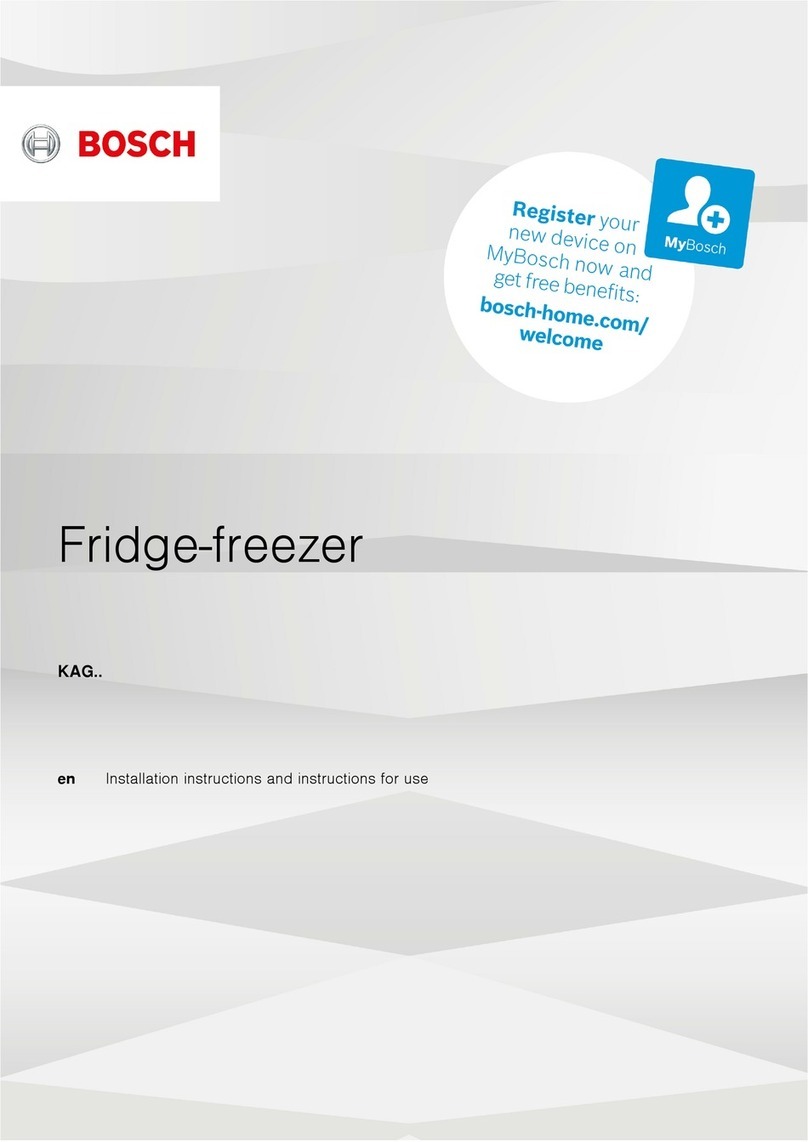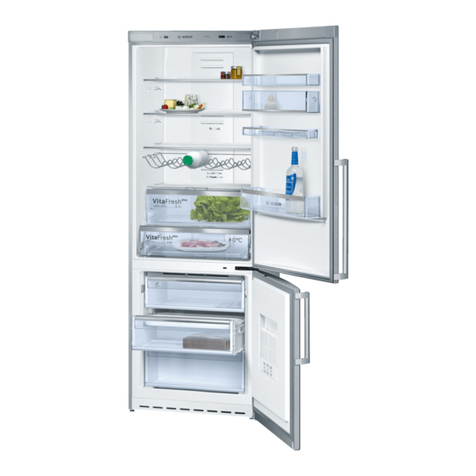
en
2
Further information and explanations are
available online:
Table of contents
1 Safety ...........................................4
1.1 General information................... 4
1.2 Intended use.............................. 4
1.3 Restriction on user group.......... 4
1.4 Safe transport............................ 4
1.5 Safe installation ......................... 5
1.6 Safe use .................................... 6
1.7 Damaged appliance.................. 7
2 Preventing material damage ......9
3 Environmental protection and
saving energy..............................9
3.1 Disposing of packaging ............ 9
3.2 Saving energy............................ 9
4 Installation and connection......10
4.1 Scope of delivery..................... 10
4.2 Criteria for the installation
location.................................... 10
4.3 Installing the appliance ........... 11
4.4 Preparing the appliance for
the first time............................. 11
4.5 Connecting the appliance to
the electricity supply................ 11
5 Familiarising yourself with
your appliance...........................12
5.1 Appliance ................................ 12
5.2 Control panel........................... 13
6 Features.....................................14
6.1 Shelf......................................... 14
6.2 Storage container.................... 14
6.3 Door rack................................. 14
6.4 Variable door rack................... 14
6.5 Accessories............................. 14
7 Basic operation .........................15
7.1 Switching on the appliance ..... 15
7.2 Operating tips.......................... 15
7.3 Switching off the appliance ..... 16
7.4 Setting the temperature........... 16
8 Additional functions .................16
8.1 Super cooling ......................... 16
8.2 Sabbath mode......................... 16
9 Alarm..........................................17
9.1 Door alarm .............................. 17
10 HomeConnect ........................17
10.1 Setting up the HomeCon-
nect app ................................ 17
10.2 Setting up HomeConnect..... 17
10.3 Switching on the connec-
tion to the WLAN home net-
work (Wi-Fi) ........................... 18
10.4 Switching off the connec-
tion to the WLAN home net-
work (Wi-Fi) ........................... 18
10.5 Installing updates for the
HomeConnectsoftware........ 18
10.6 Resetting HomeConnect
settings .................................. 18
10.7 Data protection...................... 18
11 Refrigerator compartment ......18
11.1 Tips for storing food in the
refrigerator compartment ...... 19
11.2 Chill zones in the refriger-
ator compartment.................. 19
11.3 "OK" sticker ........................... 19
12 Floor area ................................19
12.1 Storing food in the floor
area ....................................... 20
